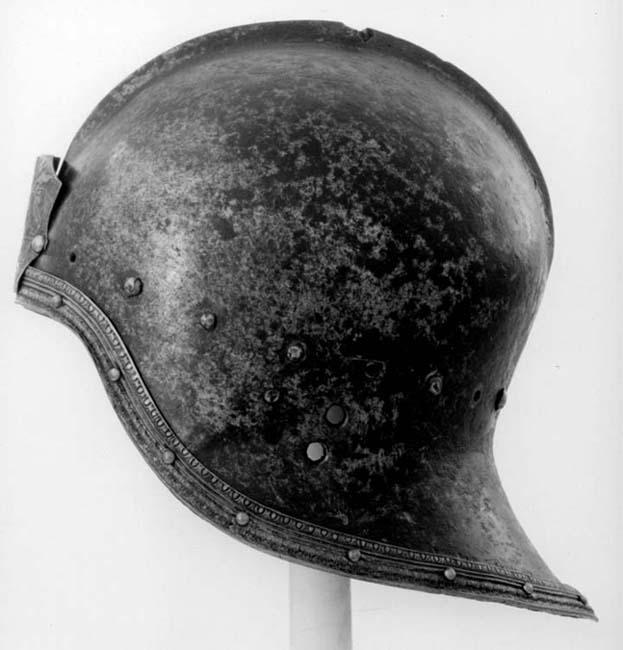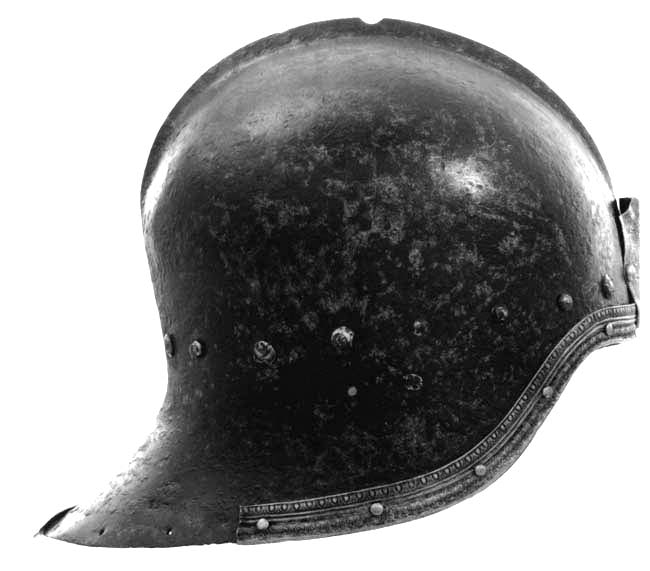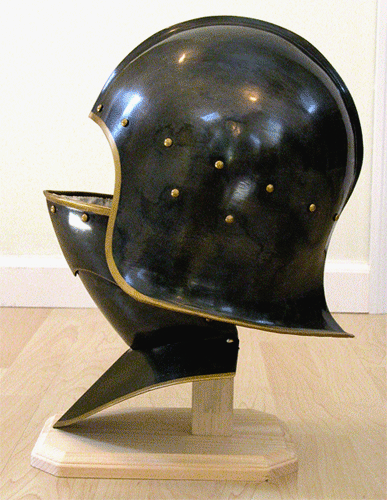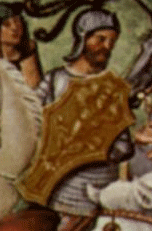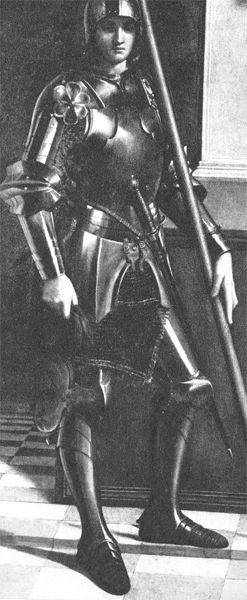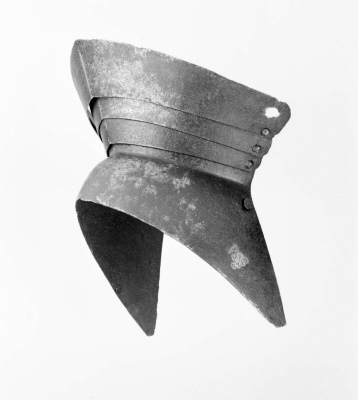Enjoy!
Royal Armouries object # IV.424
Sallet attributed to Domenico dei Barini detto Negroli. Italian, Milan, late 15th century
From the armoury of the Knights of St John on Rhodes.
Royal Armouries Image Link: http://collections.royalarmouries.org/index.p...&pg=13
The book Warrior includes a view of this sallet from the front left, but I don't have the book. I do have a book that includes line drawings of the edging design and section.
